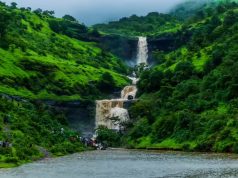India is called a country of diversity. There are many places to visit here. Maharashtra is also one of them. There are many places in this state where you can visit. Mumbai, Pune, Lonavala are named first. There is another city named Nagpur. We know it as Orange City.
But have you ever wondered why Nagpur is called the Orange City? What is so special about the oranges here that they are so famous all over the world? Although thousands and millions of people come here to visit, but very few people know about its history. Our article today is also on this topic. We will tell you why Nagpur is known as the Orange City, along with this we will also tell you its interesting history. Let’s know in detail –
The city was settled in the 18th century
Let us tell you that people call Nagpur the Orange City. It is also the winter capital of Maharashtra. Every year the winter assembly of the state is held here. This city was established by Gond King Bhakt Buland in the 18th century. It is situated right in the middle of India. Most of the vegetables and animal fodder are cultivated here. Now you must be wondering how Nagpur got its name?
.jpg)
This is Akshardham Temple of Nagpur.
The city was named after the Nag river
Nagpur is named after the Nag river that flows here. This river looks like a snake, hence it is called Nag river. Nag means snake in Marathi language. There are many tiger reserves around here, hence it is also called Tiger Capital of India.
Why is it called Orange City?
Nagpur is called the Orange City because a lot of good oranges are grown here. The soil, sunlight and weather here are perfect for growing oranges. In the 18th century, the Bhosale kings saw that the land of Nagpur is good for growing oranges. They gave land, water and help to the farmers for farming. Due to this, orange orchards started growing here. Today, a large number of oranges are cultivated in areas like Kalmeshwar, Katol, Narkhed and Saoner of Nagpur.
.jpg)
Oranges have more juice
Among these, Nagpur’s Nagpuri orange is very famous. Its taste is sweet and sour and its fragrance is also very special. Amravati and Nagpur districts together account for about 80% of orange cultivation in Maharashtra. The oranges here have more juice and are also more pulpy. The demand for oranges here is not only in India but all over the world.
Identity is visible in every street
By the end of the 19th century, Nagpur had become famous for oranges all over the country. The oranges here are sweet and juicy, and their peel is also very thin. Which can be peeled easily. Even today, oranges can be seen in every street.
What is the history of Nagpur?
The history of Nagpur is very old and special. It is believed that people have been living here since about 3000 years ago. This is also proved by the old graves found at a place named Drugadhamna. Apart from this, an inscription engraved on a stone in the 10th century has also been found in which the name of Nagpura-Nandivardhan is written. This proves that Nagpur is a very old city. Let us tell you that Nagpur was first settled by the Gond kings.
Played an important role in the development of the country
Later it came under the control of the Maratha Bhonsle kings. After the Battle of Sitabuldi in 1817, the British captured Nagpur and the Bhonsle rule ended. Then the British made Nagpur the capital of Central Province and Berar. When India gained independence, Nagpur played a special role in the development of the country. Earlier it was in Madhya Pradesh, then became a part of Bombay state and finally joined Maharashtra.
Places to Visit in Nagpur
- Dragon Palace Buddhist Temple
- Akshardham Temple
- Dikshabhoomi
- Zero Mile Marker
- Ramtek Fort Temple
- Sitabuldi Fort
- Pench National Park
- Navegaon National Park
- Ambazari Lake
- Amba Khori
- Wacky Woods
Source-
- https://nagpur.gov.in/about-district/
- https://maharashtratourism.gov.in/districts/nagpur/
- https://nagpur.gov.in/history/









